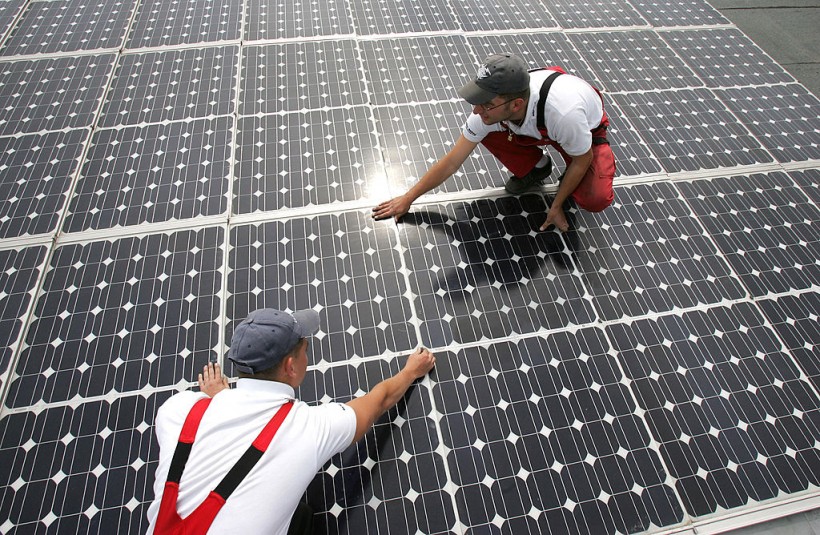Solar power innovations might become part of every household possible through a new energy storage development. Scientists first conceptualized energy-saving systems back in 2017, in which a great amount of the captured solar energy would be stored for up to 18 years.
Today, the research for the sustainable technique underwent a huge improvement, as a model for solar energy storage is now assembled.
Solar Energy Saving Technique

BUERSTADT, GERMANY - MAY 13: Two workers maintain solar panels on the roof of a warehouse on May 13, 2005 in Buerstadt, Germany. The 50,000 square meter system with a capacity of 4,5 megawatts per year represents the largest roof based solar system worldwide.
In a new study, scientists were able to configure the system wherein it will be able to produce electricity through a thermoelectric generator. The model is still in its early phase of its progress, but the system promotes promising results for the future of energy saving.
The solar energy development was led by scholars from the Gothenburg's Chalmers University of Technology. The aim of their research is to construct a sustainable approach to power self-charging electronics that utilize stored volumes of solar energy.
Chalmer's Department of Chemistry and Chemical Engineering specialist Kasper Moth-Poulsen explained that their team was able to build a new and radical approach to consuming solar energy regardless of weather factors, geographical locations, and time that affect the typical solar power collectors.
The expert said that they are excited about the work, and anticipates further development of their systems to be a significant part of the energy systems in the future, EuroNews reports.
Solar energy is a powerful source of electricity. However, the system has a great flaw due to the conditional availability of sunlight, making solar energy a variable renewable. Fortunately, there were studies that have been successful at piecing substantial solutions which may end the solar energy conundrum.
ALSO READ: Space-Based Solar Power Station Projects at Work; Benefits and Functions Explained
Energy Storage That Can Last Up to 18 Years
Solar panels, or the cell-embedded plates used for harnessing sunlight, have two basic types. The generic variants are commonly made out of waste crops that could collect ultraviolet light even in cloudy weather, while the night solar panels can work even in the evening.
Long-term solar energy storage is among the few issues that solar power techniques still have. Back in 2017, experts at Chalmer's initiated a system called 'MOST: Molecular Solar Thermal energy Storage Systems' to contribute solutions for the problem.
The architecture of this system relies on the molecules of carbon, nitrogen, and hydrogen, which change shapes when exposed to sunlight's properties.
The specified molecules shift to energy-rich isomers, or molecules having the same atoms but in different arrangements. Isomers can turn into liquid form for later energy usage, including at times when sunlight is scarce such as at night or even winter season.
The efforts of the system's developers led to the achievement of the goal, in which the system could store energy for up to 18 years.
The study was published in the journal Cell Reports Physical Science, titled "Chip-scale solar thermal electrical power generation."
RELATED ARTICLE: New Power Production Technique Accelerates Fuel 200 Times the Speed of Sound
Check out more news and information on Energy in Science Times.














